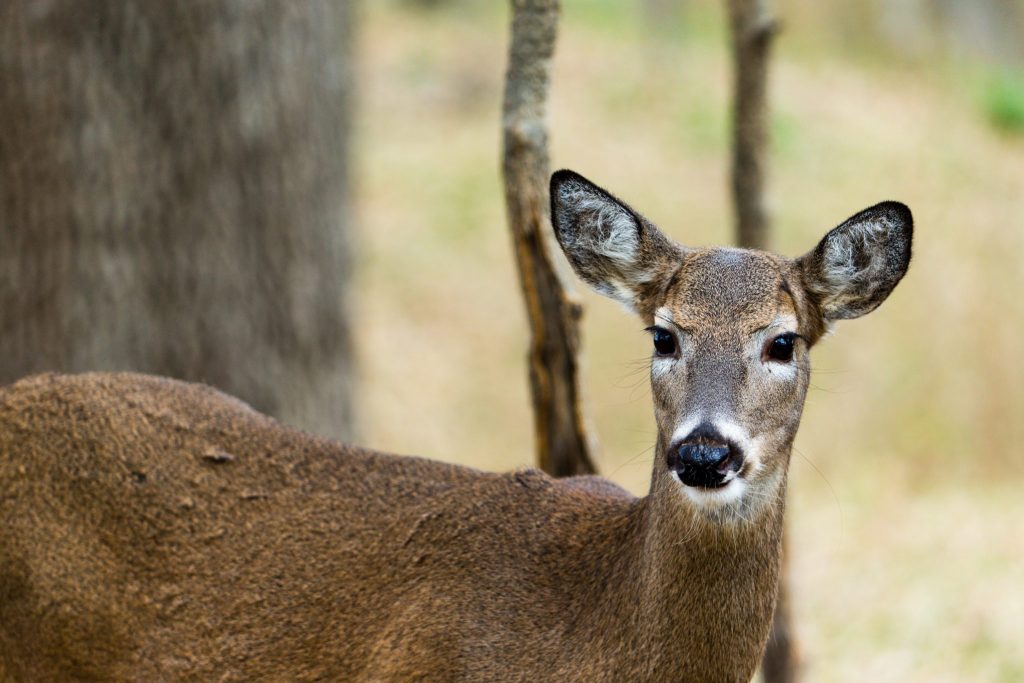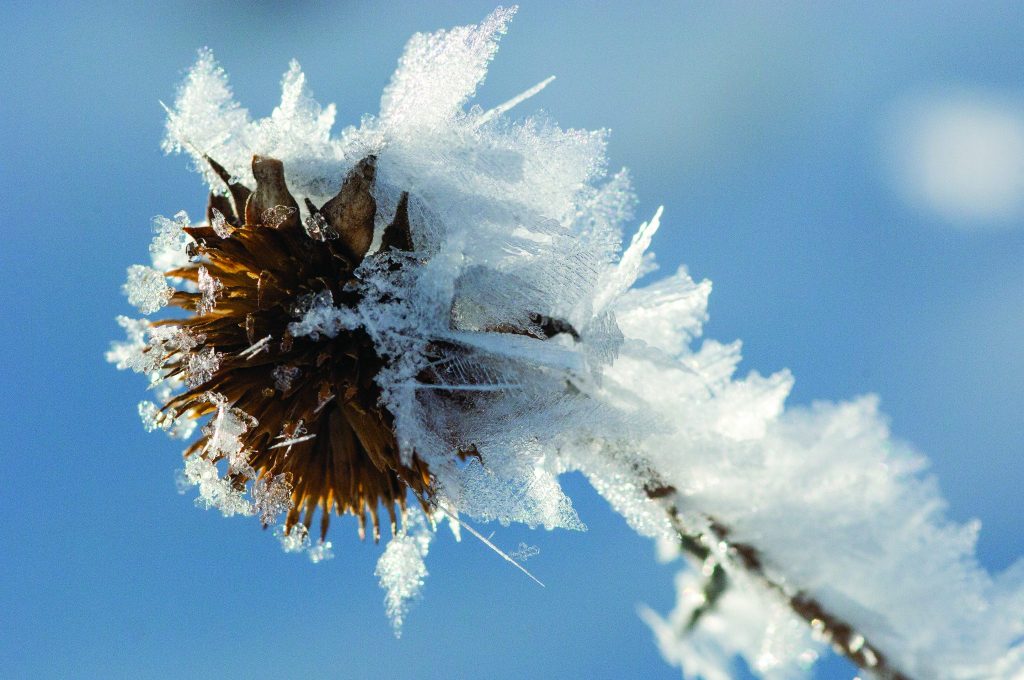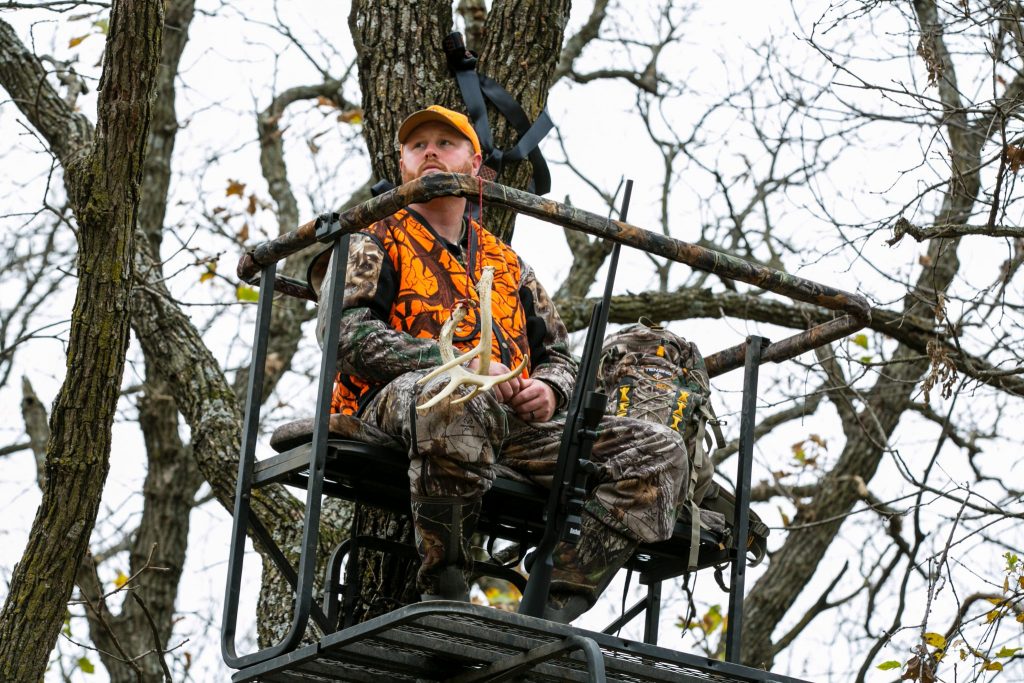Let’s discuss the constants, myths, and what you can do to advance your white-tailed deer hunting experience during the rut.
Enlarge

Story and Photos by Jeff Kurrus
Look online, or watch outdoor television, and you’re bound to see or hear someone talking about “the rut,” one of nature’s most intriguing rituals as bucks and does appear more and more across the landscape.
When exactly the rut takes place and precisely how deer – particularly whitetails – behave then is a source of great debate. Millions of dollars are given to rut research each year, with universities and other cooperatives pouring resources toward understanding this phenomenon to help hunters see more bucks in the field.
Hunters after trophy bucks will try to position themselves where they think they have the best chance at seeing the biggest animals during the rut. Many hunters think the rut is the one-week period during Nebraska’s firearm season when bucks are moving most. But many archery hunters are convinced it’s the week before. Other hunters would argue with both of these times, stating that one should get in the woods a couple of weeks before the firearm season, while a select group of people often hunt the “second rut,” which they think occurs later in the year.
Who’s right? Well, they all are. With that in mind, let’s discuss the constants, myths, and what you can do to advance your white-tailed deer hunting experience during the rut.
The Constants
Connected to the shortening of daylight, or photoperiod, a buck’s testosterone levels increase in the fall. With this increase, a buck can breed anytime from its velvet shed in early autumn to its antler drop in late winter. The velvet shed is also the beginning of the creation of “rubs” for deer, where the buck will rub his antlers and forehead – for scent distribution – on trees and bushes in an effort to attract does.

A doe, however, will go into estrus – or become sexually receptive – in a much shorter timeframe of 2-3 days when her body contains the precise amounts of luteinizing hormone, estrogen, and progesterone, writes researchers from the Deer Lab at Mississippi State University. These hormones will again be present roughly 28 days later.
Because some does go into estrus earlier than others, bucks will respond with additional movement in search of these smaller number of does in what many researchers have labeled the “pre-rut” period. During this time, bucks will continue to visit rubs, but will also begin making scrapes – locations on the ground where they will paw with their hooves and antlers and urinate.
A scrape is usually associated with a low-hanging limb or branch that the buck will break with his antlers or even bite, while continually depositing scent from his forehead, preorbital gland and mouth in an increased effort to attract does.

During this time, bucks can also increase their home range in search of does, and often exhibit behaviors uncharacteristic of the traditionally wary species by spending hours on foot. In a study conducted by Texas A&M-Kingsville, a healthy buck can spend 6.75 hours per day trying to find does in estrus.
Because of this movement, researchers at the same university found that bucks can lose – from the pre-rut to the post-rut – 24 percent of their body mass.
However, despite all of this time afoot by bucks, a doe only remains in estrus for 24 to 72 hours, giving bucks a very small window of opportunity.
At this time, bucks will often “tend” to does, remaining as close as they can while she’s receptive. If she isn’t bred during this period, approximately 28 days later the doe will go through estrus again, contributing to what many call the “second rut.”
The main constant during the rut is that nothing is constant. Because does come into estrus at different times, buck behavior changes from day to day and year to year. When she’s ready, he has to be ready too.
Myths and Legends
The rut is one of the most, if not the most, talked about subjects in the outdoor world. Do an online search, take a look at the magazine shelves or turn on an outdoor television program and facts about the rut are everywhere, yet certain myths and legends continue to prevail.
The myths and facts below represent the most up-to-date information regarding what we think we knew about the rut and what research has actually stated.

Myth: The moon phase affects when most does are bred.
Fact: From 1999-2006, Penn State University, in conjunction with the Pennsylvania Game Commission, checked 3,507 road-killed does with fetuses, cross-referencing the median date of conception with the date of the full moon. Their results showed that regardless of the date of the full moon, the median date of the rut was around Nov. 13 for adults and Nov. 25 for fawns (a period sometimes referred to as the second rut). Similar results have been reached at various universities and cooperatives.
Myth: A scrape is created, and maintained, by one buck.
Fact: Once created, a scrape can and will be visited by multiple bucks living in the same region. Most scraping, notes a long list of sources, occurs at night and nearly always occurs before peak breeding begins.
Myth: The rut is dictated by cooler weather.
Fact: Photoperiod, or the length of daylight, is the primary contributor to the rut. Think of areas of the country where “cooler” weather is much less extreme than Nebraska’s (e.g. Texas, Louisiana, Mississippi) where bucks still go through the rut.

Myth: The rut is the same length of time each year.
Fact: While the rut may occur during the same general time period each year, the factors determining its length will vary. The closer the buck to doe ratio is 1:1, the smaller the rut period will be, or the greater distance the deer might expand his home range.
Myth: All does go into estrus at relatively the same time.
Fact: Does will go through estrus at different times during the fall, forcing hunters to find one more reason they need to be in the woods another day. In a study by the Florida Fish & Wildlife Commission, in which 300 hunter-harvested does were examined, the earliest date a doe was bred by a buck was June 22 and the latest date was April 18 of the following year. In our northern state, this window is much smaller – yet still a window nonetheless.

Myth: Bucks go through an October lull, where their movements are at a minimum.
Fact: In a Pennsylvania study featuring GPS-collared bucks, there was no evidence of decreased movement during this time period. While the sample size was small, similar results were found in other studies, including in Maryland. In this study, GPS-collared bucks moved an average of 1½ miles in a 24-hour period. By October, this distance increased to 2 miles per day and up to 2½ miles per day during the peak time of the rut.
Myth: All fawns begin breeding their second year.
Fact: With proper nutrition and body size (i.e. 80 to 90 pounds for northern deer), 7- to 8-month-old doe fawns can reproduce. These does are quite often the reason for the second rut later in the deer season.
Myth: Small bucks don’t breed does.
Fact: Just like the myth stating that a spike can never become a big-antlered buck, this myth is also false. While smaller bucks are at a disadvantage because older bucks will push them out – as well as research from Mississippi State University that states that estrus does will often choose larger-antlered deer – small bucks are also capable of breeding does.
Inside Information
Dusty Schelbitzki has spent 14 years working check-in stations for the Nebraska Game and Parks Commission, and on average spends hundreds of hours afield each year hunting deer. He sees many of the same hunter patterns every year.
“Hunters will come into the check-in station early saying they’ve seen minimum deer movement,” said Schelbitzki. “But moving times vary. The reason a big buck gets big is because he adjusts his behaviors to you. If you go in and hunt two hours in the morning and two hours in the evening, he knows or has learned.”

There is never a better time during the deer hunting season than now. During the rut, hunt from sunrise to sunset. “Deer are constantly moving during this time,” said Schelbitzki. “If you’re not seeing deer, there’s a chance that a buck has found a doe close to estrus. Once he’s bred her, he’ll be on the move again.”
In an effort to see more deer or hunt more phases of the rut, many have taken to archery hunting, spending a large amount of time in the field a week or two before the firearm season, a step that Schelbitzki said has great benefit. “Big bucks are on the move during this time to see if does are in estrus. They’ll also be territorial, so calls can be effective because bucks want other bucks out of their area.”
Yet Schelbitzki also cautions that all deer differ. “There are no set patterns during the rut,” he said. “Deer will start their rut behaviors at various times, and while some may cover miles during this time, others will barely move out of their back door. It just depends on what he has there for does.”
To adjust to this randomness, Schelbitzki reiterated to try an all-day event. “It’s a mental drain,” he said, “but it’s one way to change up your pattern. The more time you’re in the stand, the more deer you’ll see.”
The most fascinating aspect of deer rut research is that the information is ever-changing. Yet there are always two constants: If you are not seeing deer, you will always wonder if you were there at the right time, yet you will always know when that right time is – it’s when you can go. ■
For additional content on the rut, see the NEBRASKAland November 2018 print copy.
The post The Rut: Constants, Myths and Legends appeared first on NEBRASKALand Magazine.
















